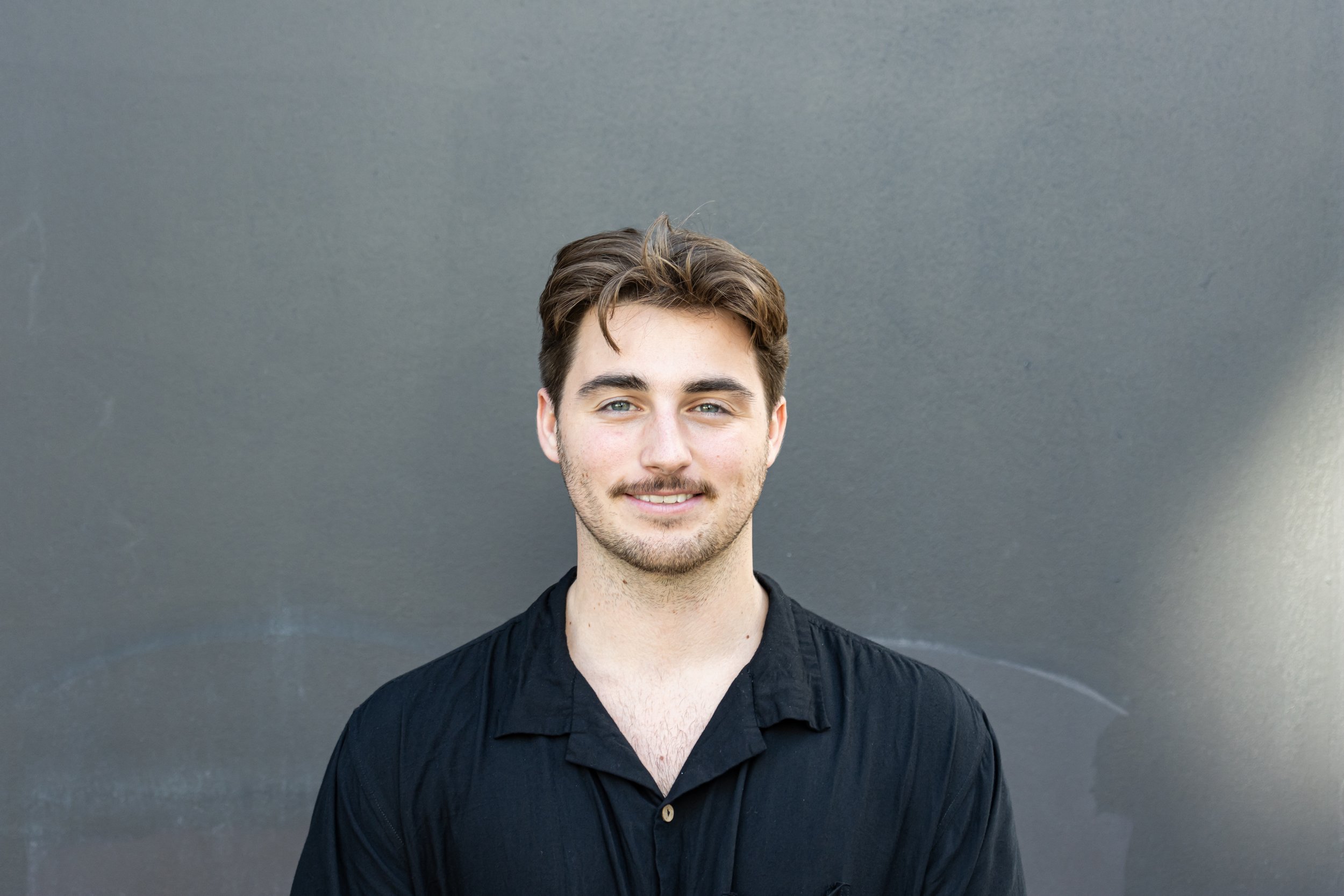Friends, Industry Connections and Mentors
During the course of my internship with BMW GROUP + QUT Design Academy, I worked in a team with another intern, Kenny, on two projects for idealworks - a Munich-based BMW Group subsidiary specialising in warehouse logistics. We regularly met with representatives from idealworks over video chats to receive feedback and inform the progression of our designs.
Past experience in industry has afforded me some insight into design for manufacture and concept development within in-house environments. However, presenting my work has always been the weakest component of my skillset. So understandably presenting to a crowd of professionals in another country whom I’d never met was daunting, to say the least. So, I entered this experience with the goal of developing my ability to confidently and succinctly present my ideas. I found that most of my shortfalls were due to poor application of common presentation practices - something that the Academy team helped me with through practice presentations and detailed feedback.
The Academy's relationship with BMW Group gave us the opportunity to work on 2 projects for idealworks - the first was to redesign their flagship product (the iw.hub robot) within the scope of a 10-year vision. The project included heavy research into emerging technology such as sensors, AI, XR, modularity, and automation. It also required an in-depth understanding of current warehouse operations, future development plans, and key challenges that warehouses face (specifically BMW plants). For me, the most interesting development also seems to be the most complicated. Our research showed that a 10-year outlook suggests that warehouses will become a hybrid working space - welcoming both automated robots and human workers. The challenge of designing for these delicate interactions fascinated me and aided in developing my ability in approaching a design problem holistically - a skill that I believe to be invaluable in any project.
Our final design concept was an evolution of the current iw.hub, including modular attachments to allow it to complete an array of tasks, as well as collaborate with other iw.hubs. We iterated through hundreds of concepts to incorporate a system that optimises communication between human workers and the robots, whilst also ensuring that we adequately reflected the brand within the aesthetic impression of the design. A substantial component of our concept included an ‘armoury’ which we informed from liaisons with the idealworks team. It served the purpose of storing components, changing attachments, and recharging, recalibrating, and cleaning the iw.hubs. I know we don't have all the answers, but our aim was to expand the idealworks team's vision for the company and show them what could be possible. I feel satisfied knowing we achieved this and that I have left having experienced a glimpse into the logistics of the automotive industry.
Our second project offered the option to design either a trade show or consumer-facing product packaging design for the current iw.hub. After dozens of concepts, we decided to move towards a design for idealworks trade shows. The challenge was to optimise their current shipping operations whilst simultaneously elevating their brand presence and marketability. The result was a timber shipping crate that unfolds into a flat-pack, hero-ing the robot and presenting branded marketing material. We ensured that the design enabled the reusability of the structure and modularity of marketing components with the aim of ensuring the longevity of the package and its suitability for future campaigns.
Overall, it was an insightful experience into identifying the needs of a brand I had never interacted with before and design an outcome that they could use to save costs and grow their sales. Reflecting on the 2 projects, it was so rewarding to design the 10-year iw.hub vision, a concept so speculative and novel; contrasted with the iw.hub packaging design, a solution that could be manufactured and implemented into idealworks' business model in less than 2 months. Designing within this framework felt like a consultancy experience in which a client has come forth with a problem and you and your team are working towards a solution. The way the designs were presented to key company stakeholders gave insight into what working at a consultancy could look like, which is something I really enjoyed.
For me, the program is a pathway to industry that develops skills whilst having the ability to elevate work past that of expectation, to a level of distinction. The array of projects available - some with the ability to interface directly with international representatives - affords the development of your portfolio and exposes you to professional practices, and industry 3.0. skills that are transferable to almost any career projection.
The Academy team is exclusively comprised of top-class talent across a breadth of specialties (some studying their Masters or PhD projects). I had the privilege of being mentored through every challenge, which introduced me to new workflows, technologies and academia, and inspired me to breach my boundaries by mirroring the team's ethic and commitment to craft. Their inclusive and encouraging culture thrives due to the celebration of humility and endorsement of interesting people and conversations. Through this experience I’ve made friends, industry connections and mentors that will bring so much value to my career and development as a designer.
Thank you to the entire team for their support and thank you all for reading,
Jack Castles
BMW Group + QUT Design Academy Intern, Semester 2 2022








